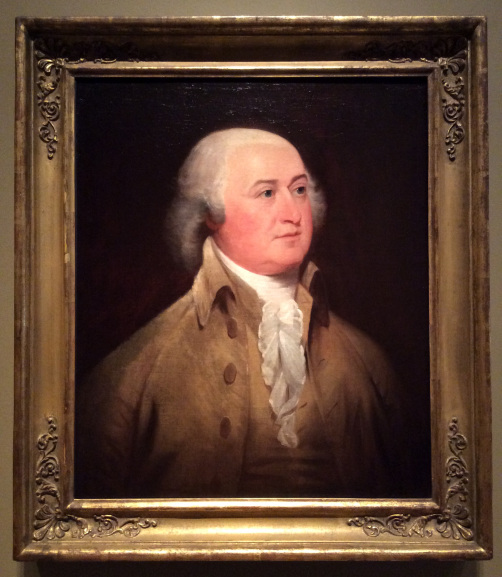
Photo courtesy of Opera North.
The East Yorkshire town of Goole lies on the river Ouse, east of the confluence with the River Don which was formed in the seventeenth century by the Dutch civil engineer Cornelius Vermuyden at the instigation of Charles the First.
“The Ouse at Goole is fantastic,” says Gavin Bryars, one of Britain’s foremost classical composers. “It’s such a powerful river and people underestimate it.”
Local legend maintains that plans to twin Goole with Gibraltar in 1969 were marked by the Mayor of that hotly-disputed territory stripping down to his trunks, diving into the river and striking out for the bank opposite, a matter of a few metres away.
A keen swimmer, he nevertheless got into difficulties. Despite laying some forty miles inland, the Ouse at Goole is strongly tidal. The Mayor was swept three miles downstream before staggering ashore – all but done in – at the warping drain at Swinefleet.
Today, Goole is twinned with the Polish town of Złotów.
The story appears in Goole-Hull Stopping Train, a collaboration between Bryars and his long-time friend and associate, Blake Morrison. Commissioned by the Yorkshire Festival in 2016, and revived for Hull 2017, it numbers amongst those compositions which Bryars says are “a homage to East Yorkshire” where he grew up.
A real-time score for the train journey eastwards between Goole and Hull (and back), the piece, experienced through headphones as the spare beauty of the landscape unspools outside the carriage windows, is utterly charming.
‘A town where nothing happens,’ says Morrison about Goole as the neat espalier of streets and houses gives way to the interlocking patchwork of fields, hedgerows and rivulets which lie beyond.
“That area is important,” explains Bryars. “There is the whole topography, the fact how incredibly flat it is. Because of the flatness you have this huge amount of sky and any sort of incident on the land is a major one.”
The gliding interplay of Morrison’s verse with the sonorous yearning and jazz inflected arpreggios of Bryars’ setting makes a wistful virtue of this surreal ambit: “You’ll see ships appearing to sail across the land, but in fact they’re coming around bends in the distance, and eventually they appear.”
“A tree will be a dramatic moment in a landscape like that. It’s rather like some beautiful Flemish landscape painting. You get that quality of focus on really tiny things. In terms of the feeling, there is a sense of melancholy or a kind of – not nostalgia – but a feeling of the elegiac that I find in East Yorkshire.”

Photo by the author.
The perplexing nature of place names such as Brough (‘pronounced bruff as in tough, as in Brian Clough’) suggests a cosy Northern playfulness at work, but Morrison strikes a chill note at the Humber Bridge, checking off the names of some of those who have leapt from ‘high in the rigging.’ It is a litany of the fallen, a grief-strewn glottal stop which owes everything to the tidal ebb and flow of the rivers which nourish the wind-tousled landscape of the estuary.
“People say that Yorkshiremen are miserable buggers anyway,” says Bryars, “but I think it’s more than that. I think there’s a sort of depth in Yorkshire that I don’t find in many other places. People tend to have roots there and, if they’ve left, they retain those roots.”
For eighteen years, before leaving to study Philosophy at university in Sheffield (“In my second year I was a professional bass player and a very bad Philosophy student”), Bryars happily composted in Goole. One summer he spent working as a riveter’s mate in a local shipyard.
“If we went away, we went to Hornsea or Bridlington or Whitby. Once or twice I hitch-hiked to Leeds or Sheffield to hear a jazz concert, and a couple of times down to London, but that was it,” he says. “So my world was East Yorkshire and I love that area.”
“My moving down to London – and later other parts of the world – was really because that was where the work was, that was where there was a cultural environment where I could thrive. But, at the same time, these places are my roots. It’s been particularly nice in the last couple of years to go back there.”
In May, Bryars brought his chamber ensemble to Junction, the local civic venue in Goole. The performance included a new piece especially written for the event, Lauda 46, based on a thirteenth century quasi-liturgical text: “That’s the first time I’ve ever played in Goole since I played there as part of an amateur orchestra conducted by my uncle when I was nineteen,” he says.
If Goole has seared itself into his memory, then the waters that flow through it and around it (canals, rivers, the sea beyond) have imbued Bryars’ finest compositions – The Sinking of the Titanic, The North Shore – with something approaching the spectral. The courses and tributaries that yield to the mudflats and tidal eddies of the mighty Humber are the veins and arteries of Bryars’ bodymap.
Landscape and water figure in Winestead, commissioned by Opera North Projects for Hull’s City of Culture celebrations. Drawing on his love for the bleak, isolated beauty of the Holderness region east of Hull, the composer creates a funerary setting for the works of metaphysical poet, Andrew Marvell, who grew up there in the tiny village of Winestead. Struck by accounts that the poet may have witnessed his father’s drowning in the corpse grey waters of the Humber, Bryars instils the part he wrote specifically for tenor John Potter with a keening melancholy.
Premiered at the tiny twelfth century village church of St. Germain, where Marvell’s father was vicar and which is illuminated still by candlelight, Winestead layers solo voice, violin, cello and treated electric guitar. Bryars himself plays the church’s ‘small, but quite beautiful organ,’ a Climenti positive.
The film accompanying the performance reveals a lyrical and haunting piece of music, one that teeters on dissonance and threatens to decay and dissolve during its twenty minute duration. Like Marvell’s father, the arrangement succumbs in the end, dragged down into the depths by the dark rallentando currents of its final drawn-out throes.
Bryars’ compositions purposefully evoke the distinctive topography of East Yorkshire, an unbroken line of beauty where the land meets the sky. For the composer it is a returning, a homing instinct, something deepset: afterall, as Morrison says of his friend: ‘If water is the wellspring of music, where better to be born?’
A much longer interview I conducted with Gavin Bryars for Culture Vultures can be found here.
Advertisements Share this:





